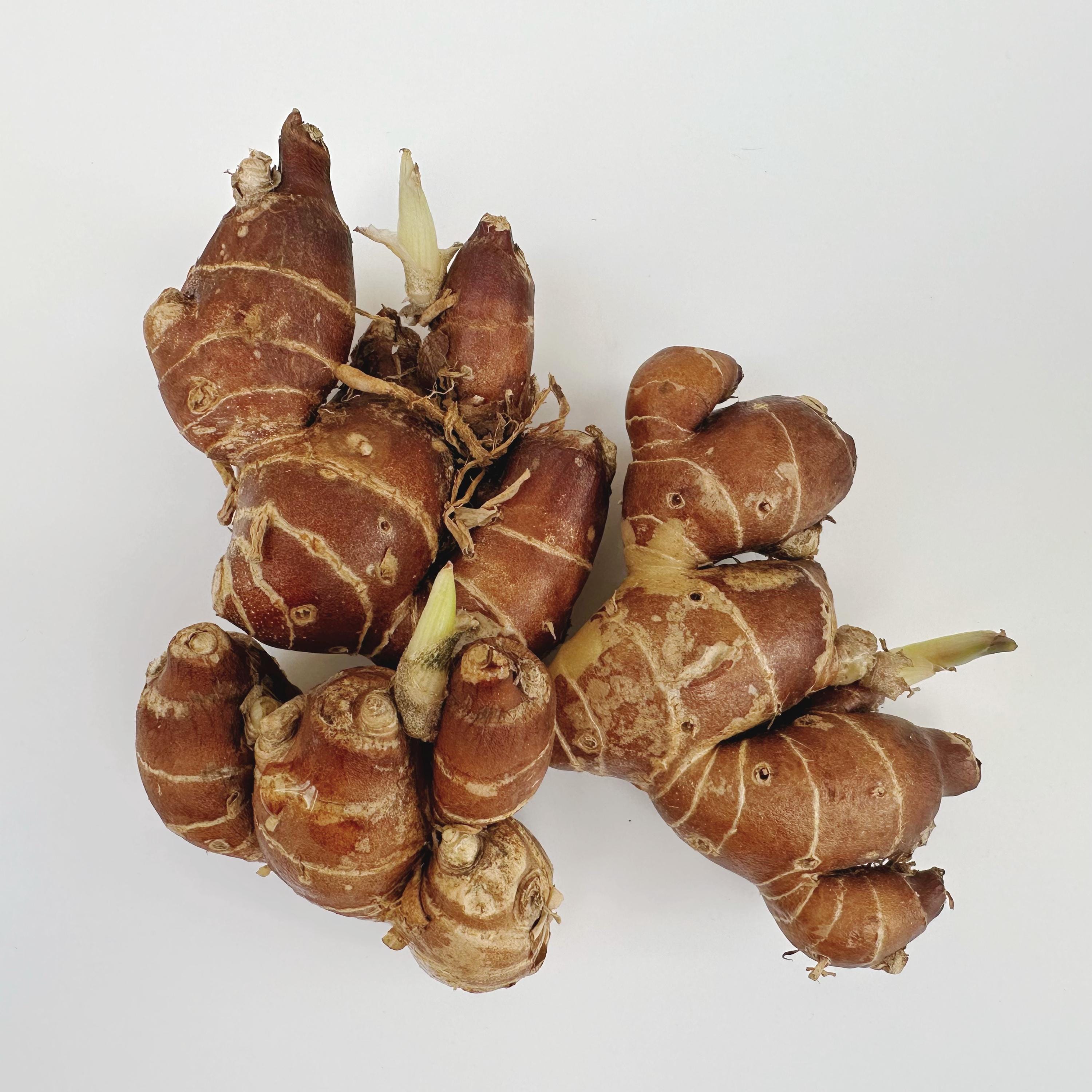Many gardeners and home cooks ask about the difference between common ginger and sand ginger. Although they belong to the same family, their flavor, aroma, and growth habits are very different. Here is a clear comparison to help you understand both plants.
1. Botanical Difference
- Ginger (Zingiber officinale): The widely used culinary ginger.
- Sand Ginger (Kaempferia galanga): A different species in the ginger family, known for its strong aromatic qualities and smaller rhizomes.
2. Taste & Aroma
- Ginger: Warm, spicy, slightly sweet, with the classic “ginger heat.”
- Sand Ginger: Highly aromatic with notes of camphor, citrus, and pine. Not very spicy, but extremely fragrant. A little goes a long way.
3. Culinary Uses
Ginger
Great for everyday cooking, including: soups, stir-fries, teas, marinades, stews, and more.
Sand Ginger
Used as a strong aromatic spice in Southeast Asian and Southern Chinese cuisines. Examples include:
- Sand ginger baked chicken
- Indonesian bumbu spice pastes
Because of its powerful aroma, it is usually used sparingly.
Some people use sand ginger for traditional purposes, but I do not make any medical claims.4. Growing Requirements
Ginger (Zingiber officinale)
- Height: 1.5–4 ft
- Prefers warm temperatures, rich soil, and partial shade
- Best suited for USDA Zones 9–12 as a perennial
- In cooler zones (Zones 5–8): Grow in containers or dig up the rhizomes before frost for indoor overwintering
Sand Ginger (Kaempferia galanga)
- Height: 6–10 inches
- Forms a low, compact rosette of leaves
- Likes warm, humid conditions and partial shade
- Best suited for USDA Zones 9–12 as a perennial
- In cooler zones (Zones 5–8): Must be protected from frost, grown in pots, or overwintered indoors
5. Quick Summary
- Ginger = spicy warmth + taller plant
- Sand ginger = intense aroma + compact plant
- Both are tropical plants and grow best in Zones 9–12
- Gardeners in Zones 5–8 can still grow them successfully with winter protection or indoor overwintering
